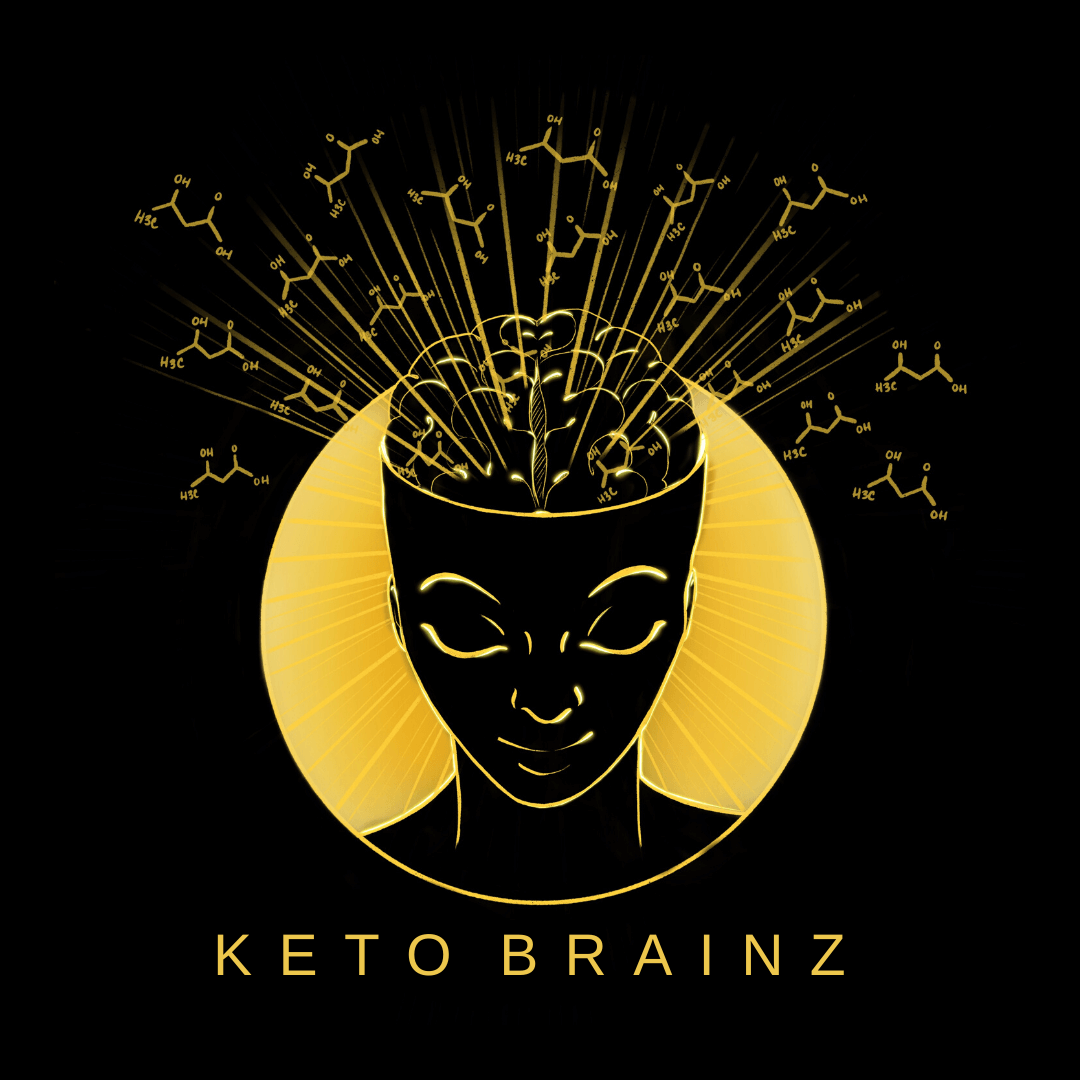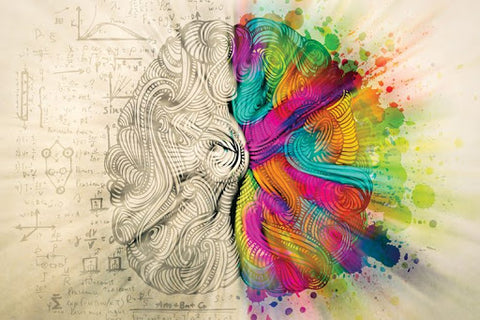How exactly do you "leverage neuroplasticity?"
If you set out to make drastic and lasting changes in your life & think you can do so without digging deep into the emotions and neurochemistry involved in how you ended up in that place that you never wanted to be in, then you will be destined to failed attempt after failed attempt. There is no growth or evolution without self-reflection and at least some understanding of the neurochemistry and the deep evolutionary roots of our behaviors & proclivities. I lovingly and laughingly refer to this as "mammal sauce."
"Mammal sauce" is the stuff that makes you want cake when you're full, chocolate when your period is coming, a big truck when you're feeling emasculated, babies when your friends are having them, that other woman over there even when you're perfectly in love with the one you have, just one more glass of wine, just one more slice of pizza, just one more hour of sleep...and on and on and on.
There are perfectly reasonable evolutionary explanations for all of these aforementioned drives. They are drives and proclivities embedded deep in your genes that at some point in your evolutionary past helped to ensure the survival of your ancestors. Yay! If you're here reading this, your ancestors had genes that ensured they had mates, food and a strong drive to survive. You win!
The problem now though is that the human species has outgrown many of the evolutionary mechanisms that were once crucial to survival. And not only have we outgrown them, many are proving to be detrimental to our health.
For those of us who wish to escape the confines of what we're been "programmed" for, this necessitates us understanding how we can short-circuit and root-out many of the behaviors our genes have strongly coded for.
OK! Back to how to leverage neuroplasticity...
First off, there are no short cuts, magic pathways or hacks that will eliminate the discomfort and pain of the molt necessary to truly evolve and grow. Yes, there are tools that can assist you along the way, but there's no way around doing the hard and focused work on yourself.
And we must each begin with the environment within our very own brains. Whether you're trying to lose weight, gain muscle, build a business, overcome trauma or simply better deal with the stressors of daily life, emotional self-regulation is step number one. What exactly, though, is 'emotional self-regulation' and how is it related to neuroplasticity?
Some of this may be new to you, so we'll start with some definitions.
1. Emotional Self-Regulation: (from Wikipedia) "Emotional self-regulation is the ability to respond to the ongoing demands of experience with the range of emotions in a manner that is socially tolerable and sufficiently flexible to permit spontaneous reactions as well as the ability to delay spontaneous reactions as needed. "
In the words of Viktor Frankl: “Between stimulus and response there is a space. In that space is our power to choose our response. In our response lies our growth and our freedom.”
2. Neuroplasticity: (from Wikipedia) "Neuroplasticity, also known as brain plasticity, or neural plasticity, is the ability of the brain to undergo biological changes, ranging from the cellular level (i.e., individual neurons) all the way to large-scale changes involving cortical remapping. Neuroplasticity describes changes the brain goes through in response to experience."
Basically, neuroplasticity = neuronal change in response to experience.
Neuroplasticity is the brain’s ability to evolve and grow throughout our lives. Until relatively recently, scientists believed that the neuroplastic state was confined to early childhood. It was thought that the brain then "ossified" and became fixed in its pathways and "habits".
Fortunately for those of us who long ago exited those magical years of effortless neuroplasticity, more recent research has shown that our brains continue to change far into old age. Again, yay!
3. Self Directed Adaptive Neuroplasticity: This describes the ability of the brain to change itself depending on how we choose to direct our thoughts and attention.
4. Limbic System: The limbic system is a set of structures in the brain that deal with emotions and memory. It regulates autonomic or endocrine function in response to emotional stimuli and also is involved in reinforcing behavior. The limbic system is often referred to as the lizard brain.
5. Neocortex: The Neocortex is a series of layers of the mammalian brain involved in higher-order brain functions such as sensory perception, cognition, generation of motor commands, spatial reasoning and language. The term neocortex comes from the latin for cortex, “bark” or “rind”, combined with "neo" from Greek for, “new”. The neocortex is the newest and outermost layer of "bark" that evolution has afforded our brains.
Back to this: "What exactly, though, is emotional self-regulation and how is it related to neuroplasticity?"
Just like our muscles, our brains get stronger the more we use them. And we are not here speaking of passive use. We are speaking of the kind of use that leaves us feeling exhausted. To stick with the muscle building analogy, we must consistently engage in new and ever more difficult brain training if we wish to fully leverage neuroplasticity. AND, as with physical training, for neuroplasticity to really "stick" we must also REST. Push, train, strive, fight for gains... then CHILL.
Now that we know our brains remain plastic over the entirety of our lives, what's left is for us to get a grasp on how to leverage this neuroplasticity towards the end of attaining our current goals and reaching ever further towards new goals.
Emotional self-regulation is getting in-front of an emotional response before it hijacks us.
The aim here is to respond as opposed to reacting. When we respond we are essentially taking in the known "data" of a given circumstance, processing it and taking an action, or not, based on what's best for us.
When we react, we are essentially being "puppeteered" by "mammal sauce". We are allowing our lizard brain (the limbic system) to control our neocortex when we react. The game here is to listen to what your limbic system is telling you, then use your neocortex to decide how you want to respond. Our limbic systems have good information to share, but blindly following the impulses of the limbic system does not often lead to us making the best of decisions for our long term health and life goals.
Every time we consciously engage with the information our limbic system provides us, we are participating in the re-wiring of our own brains. The limbic system is brilliant and we'd not exist had it not taken such good care of us over so many millennia. As touched upon earlier though, we've outgrown the need to follow its every "whim".
Through the effortful process of noting emotions (particular sets of neurochemicals) and directing or bypassing them, we are leveraging neuroplasticity and taking an active role in the re-wiring of our brain in ways that serve our goals.
Our brains are essentially “pattern-seeking devices.”
When neurons in our brains are either passively or through concerted efforts activated in repeated patterns, it becomes easier for our brains to follow those same patterns. I always picture a well trod mountain path vs one that's just beginning to be used.
Each and every time we use our brains to complete a task, our brains“remember." No effort goes uncatalogued. Each time we repeat an effortful task we are helping to ensure the next time will be just a wee bit easier. The more we practice this game of responding vs reacting, the easier is gets.
The big take away here is to remember that our brains are absolutely not static. If you don't like your current state, that's OK. Not only is it ok, it's the first and most important step in leveraging neuroplasticity. Through choosing to challenge ourselves on a continuous basis we can ,and do, build pathways that make our brains stronger and smarter. And we can do this throughout our entire lives!
There is nothing simple about neuroscience or neuroplasticity. I am not a scientist of any sort but I am the owner of a brain and as such I feel I owe it to myself to digest as much neuroscience as I can in order to better understand and more effectively wield the absolutely stunning energy conducting mass of fat and tissue living in my scull. That stunning mass of tissue IS me. We are our brains.
Back to this Viktor Frankl quote that really does best sum up the act of personally leveraging neuroplasticity: “Between stimulus and response there is a space. In that space is our power to choose our response. In our response lies our growth and our freedom.”
Learn to get comfortable in that space. It's there that our power to leverage neuroplasticity lives.
Change your brain. Change your LIFE.



